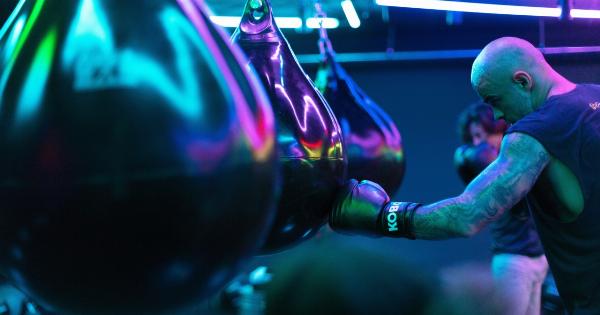When it comes to staying young, most people think about physical exercise, a healthy diet, and skincare routines. However, there is another powerful tool that can help keep the brain young—dancing.
Yes, you read that right! Dancing has been scientifically proven to have a profound impact on both the body and the mind, making it an effective anti-aging activity. In this article, we will explore the fascinating connection between dancing and anti-aging and uncover how this enjoyable pastime can contribute to maintaining a youthful brain.
The Physical Benefits of Dancing
Dancing is a full-body workout that engages various muscle groups, improves flexibility, and increases cardiovascular endurance. It offers numerous physical benefits that aid in maintaining a youthful appearance and overall health.
1. Improved Balance: As we age, balance becomes an increasing concern. Dancing can help enhance balance and coordination, reducing the risk of falls and physical injuries.
2. Increased Strength: Dancing involves dynamic movements that require muscle engagement, leading to improved strength and muscle tone. Strong muscles not only help in performing daily tasks but also contribute to a more youthful appearance.
3. Enhanced Flexibility: The diverse movements and stretches involved in dancing promote flexibility, ensuring that your body remains agile and limber as you age.
4. Cardiovascular Health: Dancing is a fun way to get your heart pumping and improve cardiovascular health. Regular dancing can increase your stamina and reduce the risk of heart disease—a common ailment associated with aging.
The Cognitive Benefits of Dancing
While the physical benefits of dancing are well-known, the cognitive advantages are equally remarkable. Engaging in dance regularly can have a significant impact on brain health and potentially ward off age-related cognitive decline.
1. Boosted Memory: Learning and performing dance routines requires memorization and quick recall. This mental exercise challenges the brain, enhancing memory and cognitive function.
2. Increased Neuroplasticity: Neuroplasticity refers to the brain’s ability to reorganize and form new neural connections.
Dancing stimulates the brain’s neuroplasticity, which is crucial for maintaining brain health and preventing cognitive decline.
3. Stress Reduction: Dancing is not only a physical activity but also a form of creative expression. Engaging in a rhythmic and joyful activity like dancing can reduce stress levels, which can have a positive impact on overall brain health.
4. Improved Mental Health: Dancing has been linked to improved mental health outcomes, including reduced symptoms of depression and anxiety. A healthy mind is an essential component of staying young and vibrant.
The Social Benefits of Dancing
Besides the physical and cognitive perks, dancing also offers numerous social benefits that can contribute to a youthful and fulfilling life.
1. Increased Social Interaction: Dancing often takes place in group settings, providing ample opportunities for social interaction and connection.
Regularly engaging with others through dance can combat feelings of loneliness and isolation, which can accelerate the aging process.
2. Sense of Belonging: Joining dance classes or participating in social dancing events can create a sense of belonging and community. Feeling like a part of a group fosters happiness, fulfillment, and a more youthful mindset.
3. Lifelong Learning: Dancing is a constant learning experience. With various dance styles, techniques, and rhythms to explore, it keeps the brain stimulated and engaged. Lifelong learning is a key component of anti-aging efforts.
4. Confidence Boost: Mastering dance moves and performing them in front of others can significantly boost self-confidence and self-esteem. Confidence radiates youthfulness and contributes to a positive and youthful outlook on life.
How to Incorporate Dancing into Your Anti-Aging Routine
Now that you understand the benefits of dancing, you might be wondering how to incorporate it into your anti-aging routine. Here are a few suggestions:.
1. Take Dance Classes: Join a dance studio or enroll in dance classes that suit your interests—be it salsa, ballroom, jazz, or hip-hop. Regularly attending classes will allow you to improve your skills while reaping the physical and cognitive benefits.
2. Dance at Home: You don’t necessarily need formal training to enjoy the benefits of dancing. Clear some space, put on your favorite music, and let loose in the privacy of your own home. Dancing is all about self-expression and having fun!.
3. Attend Social Dancing Events: Look for local events or dance parties where you can socialize and dance the night away with like-minded individuals.
It’s an excellent way to practice your moves, meet new people, and enjoy the social benefits of dancing.
4. Try Dance-Based Fitness Programs: If traditional dance styles don’t appeal to you, there are dance-based fitness programs like Zumba or aerobics that incorporate dance movements into a workout routine.
These programs offer a fun and energetic way to stay active and reap the anti-aging benefits of dancing.
Conclusion
When it comes to anti-aging strategies, incorporating dancing into your routine can be both enjoyable and effective.
Dancing not only provides physical exercise but also offers cognitive and social benefits that contribute to maintaining a youthful brain. So, put on your dancing shoes, embrace the music, and let your body and mind reap the remarkable rewards of this age-defying activity.





























